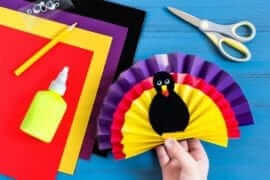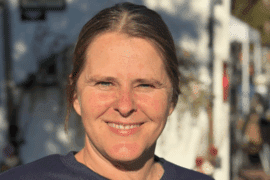4 Simple Habits of Reflection to Change the Way You Teach
There have been significant changes in my life since I became a teacher. I began my career as a single young adult who had ONLY my job to worry about, and what bar we were going to for happy hour (bonus side note: my mom still did my laundry). Ten years later, I am a married woman who juggles the responsibilities of maintaining a home, commuting, raising toddler twins AND managing her career. There are two important things that have not changed. 1- My deep love and commitment to teaching and 2- My terrible, no good, rotten memory, which has only gotten worse with all of the added responsibilities of life. I would also like to add, that, like most people, my memory is WORSE when I am stressed. So, as a mother and teacher, it’s safe to assume that that amounts to most of the time.
As a teacher, how do you combat a challenged memory and limited time so that you are able to function and complete all of the tasks which lie before you? And how do you document what you have done? How do you remember all those inspired thoughts about what you want to accomplish? How do you document what has worked, and what hasn’t? The answer lies in what is often an elusive habit: reflection. The power of reflection is enormous, and acknowledging cultivating its power is important to your professional development as a teacher. But where to begin when you are already so busy and your time is at a premium?
1- Don’t trust yourself to remember.
Inspiration hits us at weird times. For me it usually happens somewhere between shampooing and conditioning. Perhaps inspiration will happen during lunch while discussing a great lesson on the Cuban Missile Crisis with a coworker or, maybe while attending a professional development on innovative ways to teach genetics. The point is, good ideas will strike you, and you will make the immediate connection to your own class and teaching strategies. Sometimes the idea will fit right into place with what you are currently teaching and you can easily substitute one strategy for another. More often, your idea will connect to something you teach in November, when it is currently April. Don’t believe the lie that you will tell yourself- “I will remember.” Chances are you won’t. Immediately write the idea out (use the voice memo app on your phone if you have to), file it away somewhere that you will find it, and be as specific as possible.
2- Set a goal.
We all have our own system or ritual, for how we write and execute our lessons. I print out each unit at a time. I keep the printed unit in a binder: this way I can easily grab it and write the necessary information on my board daily. When the lesson is over I write notes on the print out. What was a success? What should I change? What materials are working and what needs modification? When the unit is over I sit down and re-work my plans so that they are ready for next year. The process of writing out notes on paper copies, then changing the plan will work the same at the end of the unit or at the start of next year. However, this is the system that works for me. The end of each unit is always my reflection goal. When you set a reflection goal it has to be natural for you, at a time you can easily commit to. Committing to the time it takes to reflect (which won’t be a huge commitment) is probably the most essential to your growth as a teacher.
3- Leave notes for yourself.
Remember the story of Hansel and Gretel and the path of crumbs they used to lead themselves back home? This is like my teacher life. I will open a folder of copies that I made from the previous year and, boom: there it is: a post-it reminder of where I have been and where I am going with a particular lesson. Like most of us, the number of copies I make has been significantly reduced because of my district’s one-to-one Chromebook access and the full implementation of Google Classroom. I still leave notes to my future self, in the comments of word docs, or in the speaker notes in Google Slides. These little reminders for the ghost of teaching future are a simple, 30 second reflection that immediately reminds me of what I have done and what I need to do. Again, the commitment is small but the benefits are obvious.
4- Have the kids do it for you.
As a special education teacher there are times when I feel that I am walking the tightrope, balancing between challenging my students and pushing them too far. I want my lessons to be standards based, rigorous and beneficial, but I never want to push a child, especially one with learning disabilities, to the point of shutting down. I rely on my students for feedback to help with this. I am always checking “the temperature in the room.” How are you guys doing? Are you struggling with anything? What are you confused by? Do you feel successful? When I finish a unit I make an anonymous poll on Google. I ask the students for feedback. I ask a mix of yes or no questions and short answer questions with provided sentence stems.
For example:
Mrs. Stone could improve this lesson by____________.
I felt successful when I was able to do _____________.
I did not understand ______________.
In the future I would like to _________________.
Giving the students the opportunity for multiple types of feedback, either verbal or written, lends itself to honest answers.
I look to the past for the ideal sentiment on this subject. Someone once said (supposedly either Voltaire or Spider-man), “with great power comes great responsibility.” The implementation of reflection within any career is paramount for growth. In education, this is no different. What is unique to our career is that the fruits of our labor directly impact hundreds, potentially thousands of students over the years. We need to stop, even if quickly, and maybe not as often as we would like, to truly cultivate and hone our craft.





